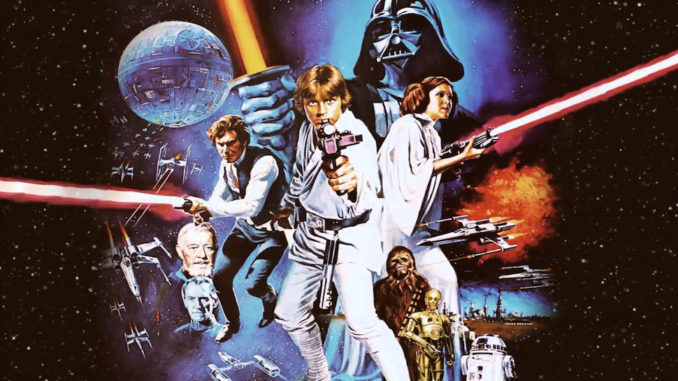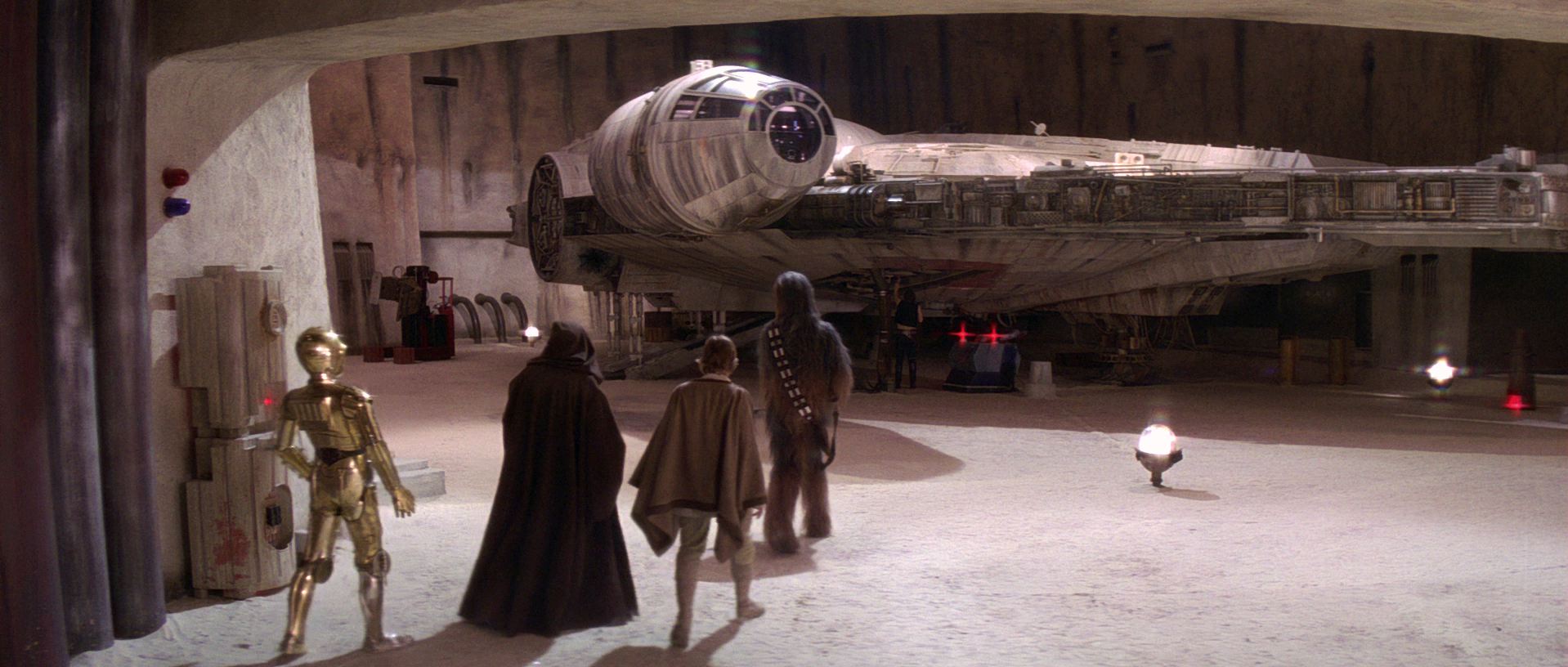
Over the years, the 4th of May has become known as Star Wars Day. Named for the dad-joke worthy pun of “May the Force/Fourth be with you”, Star Wars day has been celebrated in varying ways over the years. Recently, Disney and LucasFilm have increasingly embraced this day of celebration.
Welcome to a very special Star Wars Day edition of HoloNet Uplink. The 40th Anniversary of the release of the original Star Wars is fast approaching. On the 25th of May 1977, A New Hope, then known only as Star Wars, was released to theatrical audiences. Perhaps some of my readers were there that day or saw it soon after. For others, like myself, that was from before they were born. Given that I’ve been cranking out this blog entries for quite some time now, you can probably guess that I’m an absolutely massive fan of Star Wars. I don’t even know where to begin in describing how much of an impact Star Wars had made on me. It’s not only the constant references, the consistently engaging and entertaining releases, and the plethora of games which have brought much joy to my life. But also, and this is a bit sappy, the source of strength Star Wars sometimes is to me.
I would be negligent in my duties as a blogger should I fail to mention the Hero’s Journey in this post. The idea of a universal myth telling the story of an archetypical hero’s path from non-hero to champion, as articulated Joseph Campbell’s Hero of a Thousand Faces, is central to Star Wars storytelling. That said, many others have tackled that concept in far greater detail than I will be able to today, so if this is new to you or you want a refresher I will leave googling this point as an exercise to the reader.
Instead, I’ll go over some other points that are particularly topical for roleplayers. Some of these have been tackled in great detail within the Star Wars RPG community before. Other points I am sure have been brought up, but perhaps less often so as to not be on my radar. Regardless, I will cover some key points from A New Hope that I hope serve as a point of reference to guide roleplayers towards a great RPG experience. By no means are these musts-dos, but rather could-dos that I want to present as factors for consideration. Particularly as we all embark on a new journey through the sequel trilogy, there is an opportunity to rekindle elements of a bygone era where most questions have no canon answer, where Wookieepedia has no detailed record.
Fragmented Details
This post is not about debating the merits of The Force Awakens, but as a talking point I feel many who wanted more detail from that film forgot what it is like to just watch A New Hope. Constantly throughout the film, details are dropped which are not fully explained and provide more questions than answers. In other film genres conservation of detail is in full effect, with irrelevant details pruned out of the script. Star Wars takes the exact opposite approach.
Perhaps my favourite example of this phenomenon is Emperor Palpatine himself. The Emperor simply gets title-dropped, not even given a name or anything, as having dissolved the Imperial Senate and placed regional governors in control. As a viewer, that to me seems like a huuuge deal that I know absolutely nothing about. Who’s the Emperor? Wasn’t this a Republic before? Did they do like a Roman thing, or? Is the Senate just going to take this lying down? This is just one example.
Not only does this fit the pacing of an action adventure film, but it also adds a lot of internal credibility to the world. One of the markers of a lie, or in this case fiction, is an abnormally ordered and clean story. When someone is telling the truth they tend to include a lot of fragmented details which are irrelevant, or don’t really go anywhere. Individual characters by no means use Buffy-Speak, but when taken as a whole A New Hope includes a lot of these fragmentary details which are unconnected to the story in any way. On a subconscious level, I suggest this makes the story seem more real to us.
The Lived in World
Anything that is truly used often is never completely clean and almost certainly not mint condition. For anyone who has worked with machinery, or even pushed a car or truck into its end life, you know what I’m talking about. Grime accumulates, proper maintenance gets put off a bit, and jury-rigged repairs last a bit longer than they were meant for. Most of the time only minor imperfections can be found, but in all but the most immaculately maintained machines a keen eye can find something amiss. Star Wars, ironically for a film set “a long time ago”, is a prime example of the Used Future trope. This visual design point is pretty critical to the feel of Star Wars, but can easily be forgotten

This is primarily a narrative topic, as with the other points in this post, but in addition gamemasters should feel free to reinforce this narrative point with mechanical consequences. Negative effects caused by narrative dice results are excellent opportunities to remind the players of how worn down and used their equipment is becoming. Han Solo is classically always trying to keep the Millennium Falcon running. In The Empire Strikes Back, we even get to see the classic “hit it and it works” gag. Struggling against used up technology is a classic Star Wars trope and one that is especially topical for Edge of the Empire game.
Constant Hooks for Expansion
There is a saying that goes something like, “if it has more than 2 seconds of screen time in a Star Wars film, then there’s 5 pages of backstory on it on Wookieepedia.” Back in the days of the Old Expanded Universe, this hyperbole had an element of truth to it. Thousands of minor characters and background creatures have spawned works of their own, exploring every corner of the galaxy. Certainly it was a mixed bag
Legends was full, bloated even, of content linked to background elements of the movies. This was surely problematic for those maintaining canon and a consistent feel for Star Wars, but is also an example of one approach to game mastering. By including those fragmented details, meant to create a more real sounding world, you will likely also be dropping a significant number of adventure hooks. Just as the original films led to a massive assortment of works within the intellectual property, this approach can provide many narrative hooks for players and GMs to explore during their campaigns.
Playing Tropes Straight
In a recent post, I talked about mentors and included an example of The Obi-Wan. The point I was trying to raise there was the simple fact that tropes played straight are not necessarily good or bad. A New Hope is one of the premiere examples of this principle.
There is not a lot of ambiguity in A New Hope. A band of young heroes in white take on evil space Nazis with the help of their Wise Old Mentor. While the Evil Empire, in their hybrid, has overlooked a fatal flaw in their Super Weapon, La Resistance must execute an Airstrike Impossible while being hunted by a Fallen Knight. This goes back to the hero’s journey and the idea that universal storytelling ideas can be channelled across time and cultures. We see these tropes emerge in literary works over and over again because they have a mass appeal to human audiences. Star Wars chooses to embrace this, to play these ideas mostly straight and tell a universally appealing story. While GMs should avoid absolute cliche storms and should inject their own creative ideas into their games, I think it’s important to note that playing these ideas straight can be a great idea. Gamemasters should feel they have permission to do so; just because you are playing it straight doesn’t mean you are not telling an interesting story.
I hope today has inspired you as much as it has me to enjoy Star Wars through the medium of roleplaying. Even though we’ve all seen the films many times, sometimes taking another look can Keep those dice a rollin’, and May the Fourth be with you!
Christopher Hunt
Latest posts by Christopher Hunt (see all)
- Command School – Deterrence and Compellence - July 11, 2019

Your comments about ‘playing it straight’ remind me of a book about role playing that I read. One piece of advice was to “be obvious”. This goes for players and GMs both — everyone’s mind is a little different, so different things are ‘obvious’ to us. If you do or say what’s obvious to you, nine times out of ten, it’ll be obvious to everyone else, and because you did what’s obvious the story proceeds without a stumble, with no loss. You don’t look stupid for doing the obvious, you’re just playing along. But that one time in ten, you just did something nobody else saw coming (or only one person did), and it looks brilliant.
When you actively try to be brilliant, you spend a lot of time overthinking situations, or saying things that look weird and dumb to the other players; if you try to be obvious, you’re accidentally brilliant on a regular basis and doing a fine job the rest of the time.
That’s how I feel about using obvious tropes in a story. 90% of the time, they’ll be pretty obvious and straightforward, and that’s great, your party will know how to approach them. And then once in a while, you’ll accidentally throw a curveball, and it’ll be a fantastic moment that everyone remembers fondly.
“Hey, remember that time we almost got cooked and eaten by teddy bears?”
Sorry about the late reply! You’ve raised a very interesting point and explained it quite well. I’d love to read an entire article about playing tropes straight as a GM.